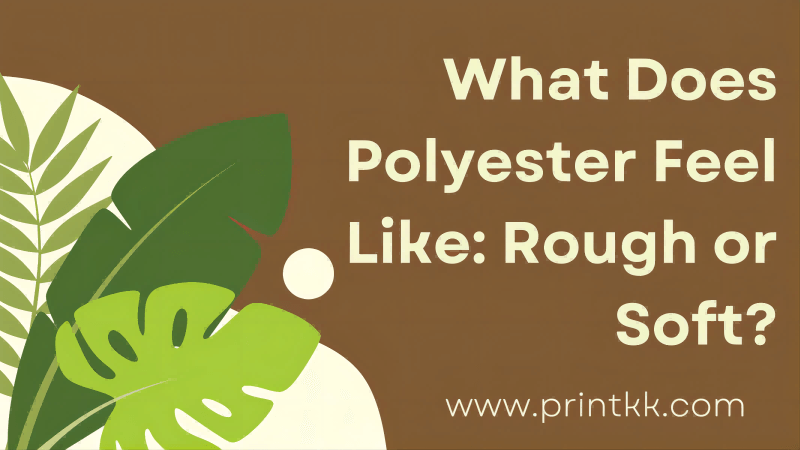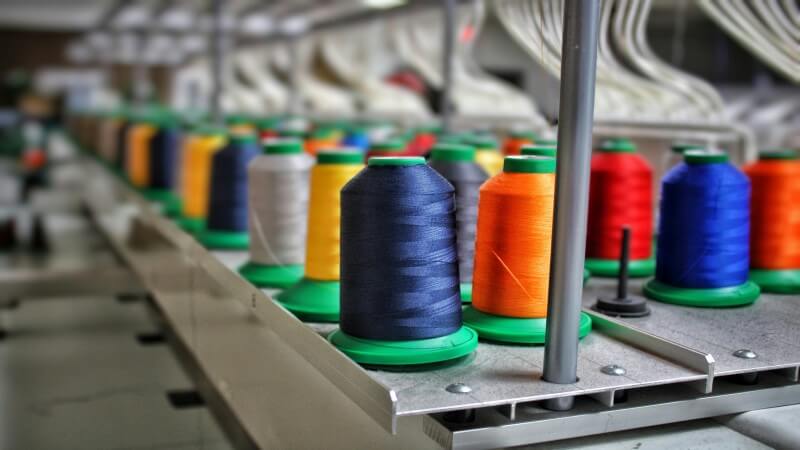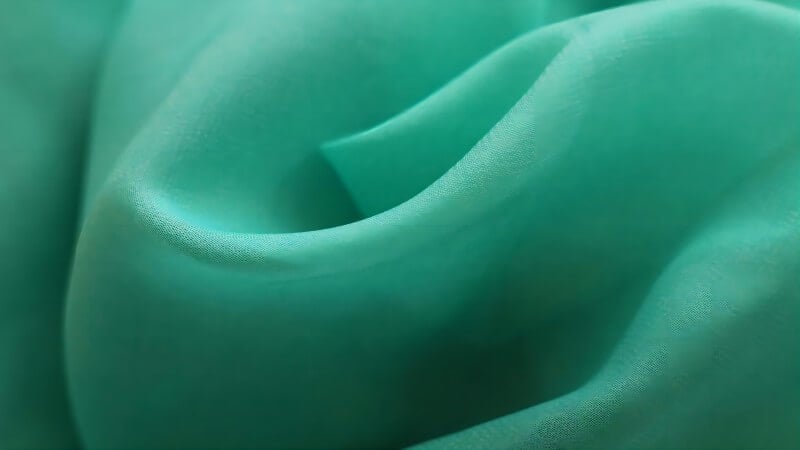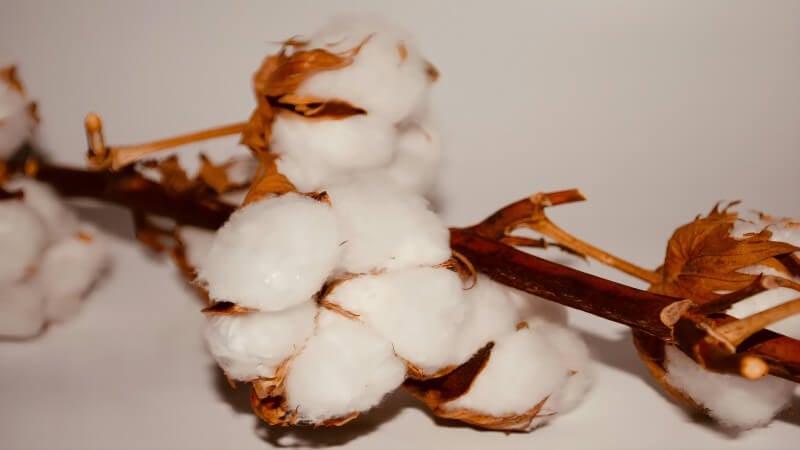
Exploring the tactile sensations of fabrics, one often wonders about polyester's texture. Is it luxuriously soft, or does it lean towards a rougher feel? This material's versatility spans across various applications, making it a subject of curiosity for many. In this piece, we delve into the essence of polyester, uncovering its characteristics and how they translate to our touch.
What Is Polyester Fabric?
Polyester fabric is a synthetic marvel, favored for its durability and resilience. Originating from a category of polymers known as polyethylene terephthalate (PET), this material is celebrated for its exceptional resistance to wrinkles and shrinking.
Notably, its versatility shines in various applications, from fashionable apparel to robust outdoor gear and home textiles. Its ability to retain shape and vibrant colors after multiple washes makes it a preferred choice for creators looking to bring their designs to life with longevity and consistency.
When it comes to the tactile experience, polyester offers a smooth and comfortable feel, which can vary depending on the fabric's weave and finish. Innovations in textile manufacturing have enabled the production of polyester fabrics that mimic the softness of natural fibers, making it increasingly popular for those seeking a fusion of functionality and comfort in their creations.
Moreover, its quick-drying properties and minimal moisture absorption make it an ideal candidate for sportswear and active apparel, providing wearers with a comfortable and dry experience even during intense activities.
What Is Polyester Made Of?
Polyester's origins are deeply rooted in the innovative world of synthetic chemistry, where it stands as a testament to human ingenuity in creating versatile materials. Crafted through a chemical reaction involving coal, petroleum, air, and water, this fiber is essentially a kind of plastic, belonging to the family of polymers.
Its creation process, known as polymerization, transforms these raw materials into long, repeating chains that give polyester its strength and durability. This unique composition allows for a wide range of applications, not only in the realm of fashion but also across diverse industries, from automotive to home furnishings.
Thanks to its synthetic nature, polyester boasts properties that natural fibers can't easily match, such as exceptional resistance to environmental wear and tear. Its ability to be engineered in various ways means that designers and manufacturers can adjust the texture, feel, and functionality of the final product to suit specific needs.
This versatility ensures that entrepreneurs and creators can explore new horizons in product development, meeting the evolving demands of consumers with innovation and style.

How Does Polyester Feel Like?
Polyester, in its various forms, caters to a broad spectrum of needs, from everyday durability and luxury comfort to high-performance wearability. Each type serves a distinct purpose, allowing entrepreneurs, small business owners, and designers to select the perfect material for their unique product lines.
Standard Polyester: Smooth and Durable
Engaging with standard polyester, one immediately notices its smoothness and structural integrity. Renowned for its resistance to wrinkles and shrinking, this variant stands as a testament to durability.
Ideal for daily wear or household items that demand longevity, standard polyester ensures products retain their shape and color vibrancy after numerous washes. This resilience makes it a preferred material for a diverse array of applications, appealing to entrepreneurs and brands looking for quality and reliability in their product offerings.
Microfiber Polyester: Soft and Luxurious
Dive into the world of microfiber polyester, and you're met with a softness that rivals that of the most luxurious fabrics. This type of polyester is crafted by weaving ultra-thin fibers, resulting in a fabric that's exceptionally soft to the touch.
Microfiber polyester is not only plush but also highly absorbent, making it a popular choice for towels and sportswear. Its capability to wick moisture away from the body, coupled with a gentle, comforting feel against the skin, underscores its appeal for clothing and bedding alike.
Athletic Polyester: Lightweight and Breathable
Athletic polyester offers a lightweight and breathable option that's perfect for the active lifestyle. This fabric variant is designed with the movement of the wearer in mind, featuring a loose, airy weave that promotes airflow and reduces sweat retention.
Its breathability is a boon for sportswear, ensuring that even during intense physical activity, comfort is not compromised. Athletic polyester is also quick-drying, a feature that enhances its functionality by minimizing discomfort post-exercise.
Polyester's versatility extends across a spectrum of textures and functionalities, each tailored to suit specific needs and preferences.This adaptability makes it an invaluable fabric for entrepreneurs, designers, and brands looking to craft products that not only meet but exceed expectations in terms of quality, comfort, and performance.

Pros and Cons of Wearing Polyester
Polyester offers several advantages that make it an attractive choice for apparel and accessories. One of its most praised benefits is durability. Garments made from this synthetic fiber tend to hold their shape and color longer than many natural materials, even after multiple washes. This resilience against wear and tear makes polyester a go-to for items that need to withstand regular use.
Additionally, its resistance to shrinking and wrinkling adds to the appeal, especially for those looking for low-maintenance clothing options.
On the flip side, polyester's synthetic nature does introduce some drawbacks. Wearers with sensitive skin may find certain polyester fabrics less breathable than natural alternatives, potentially leading to discomfort during prolonged use or in hot climates. This aspect is crucial for brands and influencers to consider when targeting markets or promoting products designed for all-day wear or active lifestyles.
Furthermore, environmental consciousness among consumers is on the rise, and the ecological impact of producing and disposing of synthetic fabrics like polyester is a growing concern.
Acknowledging these advantages and disadvantages enables entrepreneurs and designers to thoughtfully select materials that align with their brand values and customer expectations.

How Is Polyester Produced?
Polyester's journey from raw materials to the final fabric is a fascinating process, rooted in chemical engineering.Through a chemical process known as polymerization, ethylene is converted into polyethylene terephthalate (PET), the chemical name for polyester. This transformation is carefully controlled to produce long, strong fibers that can then be spun into yarn and woven into the versatile fabric known to many.
The precision in this process allows for the creation of polyester with varying characteristics, including texture and durability, making it a preferred choice for a wide range of applications.
Understanding this process is crucial for those in the print-on-demand sector, as it sheds light on the versatility and resilience of polyester fabrics. Meanwhile, understanding the production nuances of polyester not only aids in product development but also enhances marketing narratives, connecting consumers with the science and craftsmanship behind their purchases.
Uses of Polyester Fabric
Polyester fabric holds a revered spot in the modern textile industry, thanks to its versatile applications that span across various sectors. Esteemed for its strength, resilience, and ease of maintenance, this synthetic material seamlessly integrates into the world of fashion, home decor, and even technical fields.
Designers and entrepreneurs gravitate towards polyester for its adaptability, allowing them to explore creative avenues without compromising on durability or aesthetic appeal. From vibrant clothing lines that capture the essence of current trends to robust outdoor gear designed to withstand the elements, polyester's usage is as diverse as the audience it serves.
Moreover, polyester's inherent qualities make it an ideal choice for organizations and brands looking to make a lasting impression. Its ability to hold dyes well ensures that colors remain vivid and fade-resistant, a crucial factor for maintaining brand imagery over time.
For corporations and small businesses alike, polyester offers an economical solution for producing high-volume merchandise, such as uniforms, promotional items, and event decor, without sacrificing quality. As the fabric continues to evolve through technological advancements, its application scope widens, further cementing its role as a cornerstone in both innovative design and practical, everyday use.
Feeling: Polyester vs Cotton
Diving into the tactile world of textiles, polyester and cotton often lead the conversation, each offering unique sensory experiences.
Polyester, crafted from synthetic materials, boasts a smooth and lightweight feel that appeals to those prioritizing durability and ease of care in their fabric choices. Its resilience against wrinkles and shrinkage makes it a go-to for apparel and accessories that aim to maintain their shape and vibrant colors over time.
Entrepreneurs and designers find polyester appealing for its ability to replicate the look and feel of more luxurious fabrics at a fraction of the cost, providing a practical yet stylish solution for a wide range of products.
On the flip side, cotton brings a soft, breathable touch that is often associated with comfort and natural appeal. This fiber's ability to absorb moisture makes it a favorite for warm-weather clothing and items designed for sensitive skin.
While cotton's texture might offer a more comforting embrace, it requires a bit more love and care to preserve its qualities, including susceptibility to wrinkles and fading.
For brands and creators aiming to blend comfort with sustainability, cotton's natural origins present an attractive angle. However, when it comes to versatility and performance under various conditions, polyester has its distinct advantages, especially in applications where durability and color retention are key. By understanding the feel and functional benefits of each material, designers and businesses can make informed decisions that align with their creative vision and operational needs.

Conclusion
In wrapping up our exploration into the unique texture and utility of polyester, it becomes clear why this fabric holds such a prominent place in the textile industry.
Its versatility and resilience cater to a wide array of preferences and needs, making it a staple in both fashion and functional wear. Entrepreneurs and designers benefit from its adaptability, offering customers products that are not only durable but also comfortable and stylish. The ability to engineer polyester to mimic textures ranging from silky smooth to rugged and durable underscores its appeal across various markets.
As we continue to innovate and seek sustainable practices within the industry, polyester's role is evolving, but its foundational qualities remain indispensable. This knowledge not only enriches our appreciation for polyester but also enhances our ability to serve diverse consumer needs with creativity and insight.
FAQs
Is polyester rough or soft?
Polyester's texture varies, but it often blends softness with durability, making it ideal for diverse applications. This versatility ensures it suits various preferences, from sleek fashion to sturdy outdoor gear.
Does polyester feel the same as cotton?
Polyester and cotton offer distinct textures; polyester is smooth and durable, while cotton provides a softer, more breathable touch.
Is polyester better than cotton?
Choosing between polyester and cotton depends on your needs; polyester excels in durability and moisture resistance, while cotton offers unmatched comfort and breathability.
Does polyester feel silky?
Polyester's finish can vary, offering a silky texture in finer weaves, enhancing garments with a smooth, lustrous appearance.
Why do luxury brands use polyester?
Luxury brands opt for polyester due to its versatility, durability, and ability to replicate high-end textures, offering sophistication and long-lasting quality.










 Global Shipping
Global Shipping




























